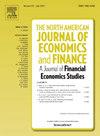Macro topology structure and evolution of Chinese Public Funds’ Co-holding Network
Abstract
The behavior of institutional investors such as public offering funds and investor networks play an important role in information transmission and risk contagion in the capital market. Less attention has been paid to the macro topological structure characteristics and the fund group behavior of the co-holding network indirectly formed by the common holding among funds. Based on the complex network analysis method, this paper firstly uses three methods to define the co-holding behavior of funds and construct the co-holding networks between large funds and small funds and between large funds, and then conducts a comparative study on the Macro topology structure and evolution characteristics of the Chinese Public Funds’ Co-holding network. The results show that: (1) Although the three networks are large sparse networks, the co-holding behavior among funds still widely exists; (2) Both networks have the characteristics of small-world and scale-free, but there are significant differences in the degree of specificity; (3)There are significant differences in the evolution of “small-world and scale-free” between the three networks; (4) When the large funds and small funds are considered comprehensively, the “small world” and “scale-free” of the fund co-holding network and the stock market show a relationship of mutual influence and mutual restriction.This study provides a reference for understanding the influence of mutual shareholding among funds, and for regulators to manage stock market risk and institutional investor governance.

 求助内容:
求助内容: 应助结果提醒方式:
应助结果提醒方式:


